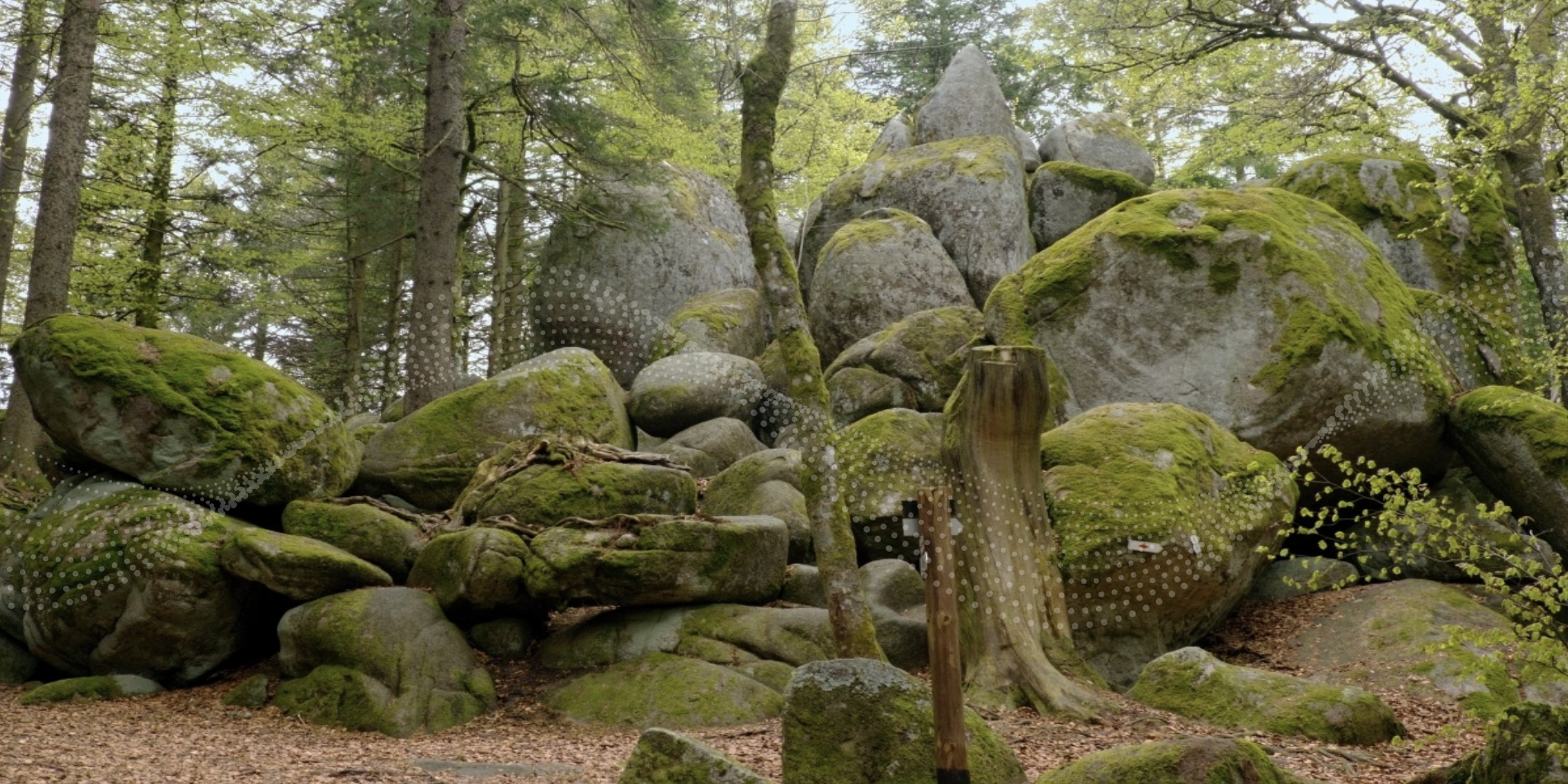Forest Reimagined

Digital Landscape is an interdisciplinary student project that merges conceptual design, 3D scanning, and physical prototyping to reconstruct a forest through all four seasons – both visually and structurally.
Our goal was to create a digital nature experience that transforms over time, mimicking the evolution of a real ecosystem. The final result was exhibited at the Instand Festival as a multi-projection installation enriched by physical models and point cloud visualizations.
Reconstructing a Forest: From Idea to Point Cloud
We began by developing a strong conceptual foundation. Inspired by immersive games and the aesthetics of natural change, we designed a seasonal forest that transitions from spring to winter. Using moodboards, research imagery, and field impressions, we created a rich visual narrative of nature’s temporal transformation.
To bring this idea to life, we performed a full-scale photogrammetric capture of a real forest segment. This included:
- Planning and scouting suitable locations
- Capturing ~7,500 high-resolution images
- Segmenting the site into multiple scanning zones
- Building accurate point clouds with Agisoft Metashape
Because of environmental complexity (sunlight variations, foliage motion, uneven terrain), this was not a typical photogrammetry task. We experimented with drones and lenses, ultimately selecting the Güntherfelsen area for its geometric clarity and accessibility.
Despite software and hardware limitations (e.g., Metashape licensing, render crashes, 26-day estimation for dense cloud rendering), we managed to extract and merge high-quality point clouds using Blender and specialized plugins.
Physical Modeling: 3D Printing & Real-World Presence
To complement the digital experience, we also created a 3D-printed globe that symbolized the cyclical nature of time and seasons. I used the Ultimaker S5 printer and solved multiple hardware issues (oversized spools, extrusion failures) to finalize the model in time for the exhibition.
Festival Installation & Presentation
The final installation included:
- A three-beamer projection setup with adaptive geometry
- A printed physical model as centerpiece
- Curated lighting and staging
- Real-time visuals from our point cloud dataset
Skills & Technologies Applied
- Concept design & moodboarding
- Photogrammetry with Agisoft Metashape
- Point cloud processing with Blender & plugins
- 3D printing with Ultimaker S5
- Technical setup for multi-beamer installation
- Problem-solving under time and hardware constraints
This project pushed both our creativity and technical problem-solving skills. It reflects my ability to lead across disciplines and execute ambitious ideas with precision, even under challenging real-world conditions.
© 2025 Sabine Schleise